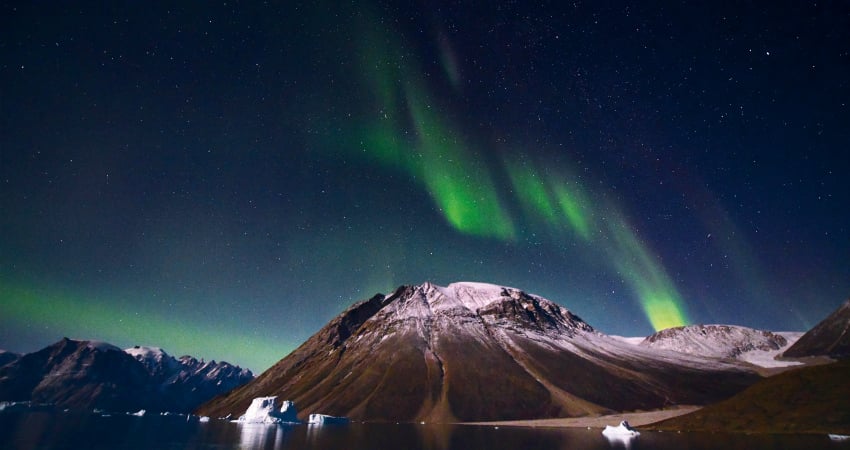How to See the Northern Lights
7 December, 2022

Seeing the Northern Lights, also known as Aurora Borealis, is a bucket-list item for many travelers. And no wonder: this natural phenomenon is one of the most beautiful light shows one can ever experience. Fantastic shades of green and blue, and sometimes even yellow, pink, and red, create giant, illuminated ribbons that dance across the dark Arctic sky.
The Science Behind the Northern Lights
The Northern Lights are a result of charged particles of solar wind disturbing the Earth’s magnetosphere. The upper atmosphere components become ionized and emit light of varying wavelength or color to the observer’s eye, depending on the type of gas particles that are colliding at different altitudes.
The most common auroral color, pale green, is produced by oxygen molecules located about 60 miles above the Earth’s surface. Rare, all-red auroras of high-altitude oxygen can be observed at heights of up to 200 miles. Nitrogen emissions make a blue or purplish-red aurora.
The Northern Lights occur within the auroral zone band, located between 10° and 20° longitude from the geomagnetic poles and typically 3° to 6° wide in latitude. To observe them, the sky has to be dark and clear.

When to See the Northern Lights
From late spring until the end of summer, the Northern Lights are harder to see because the sky is light due to the sun constantly being above the horizon. When the nights start to grow longer, the opportunities for Aurora-viewing increase.
September, when Arctic temperatures aren't yet too frigid, offers great opportunities to see the show, especially near the autumnal equinox when more solar particles interact with the atmosphere. Sure, dark skies from January until March provide the perfect setting for the lights, too, but the temperatures during this time frame can be quite inhospitable above the Arctic Circle. In addition, the snow and sea ice sets in during November and December, and atmospheric conditions can lead to clouding and more frequent obstructed views.

Our Northern Lights viewing tips
When planning an Aurora hunt, you have to keep in mind that this is a sporadic natural phenomenon, occurring randomly, sometimes for quite short periods of time. Seeing the Northern Lights is as unpredictable as the Arctic weather itself. You can increase your chances of spotting them, but you can never guarantee it.
There are a number of places suitable for seeing the Northern Lights, for example, Reykjavik and Tromsø. But cities usually have more ambient light and heavier pollution levels than the countryside, so try to seek spots away from high-trafficked areas.
If you choose a cruise to observe the Aurora Borealis, the biggest tip would be to not build your whole trip around the Northern Lights; in other words, manage your expectations. That way, your voyage will be a memorable adventure, filled with exciting memories and other natural wonders. Go for the destination and let the elusive Aurora be an added bonus if and when the weather conditions allow.

With Poseidon Expeditions, your highest chance to spot the Northern Lights display is joining an East Greenland cruise. In September, as Arctic nights become sufficiently dark, the magnificent fjords – well away from the city lights – become an ideal place to watch these mesmerizing light displays. Days are still long enough to explore an outsized landscape of polychromatic mountains, blue glaciers, shining white icebergs and tundra valleys awash in autumn colors. Vast and unspoiled, East Greenland is the quintessential Arctic wilderness, a place that is certain to stay in your heart.